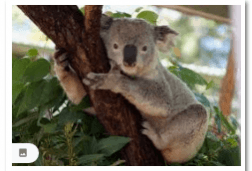Australian conservationists and scientists are working to restore the population of one of the nation's most elusive native animals, the platypus.
The announcement followed an environmental survey from the University of New South Wales (UNSW), released on Wednesday, that the egg-laying mammals have disappeared from the sprawling and rugged Royal National Park on the outskirts of Sydney.
Gilad Bino from the UNSW's Centre for Ecosystem Science's Platypus Conservation Initiative said the grim finding was based on results of environmental DNA (eDNA) tests of water samples in the park, Xinhua news agency reported.

It is, unfortunately, an increasingly common situation with the UNSW scientists estimating that platypus habitats throughout eastern Australia have shrunk by up to 22 per cent in the past 30 years due to factors such as land clearing, river regulations, and extreme droughts.
The shy animals are classified as being a near-threatened species, according to the International Union for Conservation of Nature.
The good news, however, is that Bino and his team, in collaboration with World Wildlife Fund-Australia, Taronga Conservation Society, and NSW National Parks and Wildlife Service, are about to reintroduce platypuses back into the Royal National Park, possibly by August.
"We're hoping to reintroduce a founding population of 10 platypuses and our hope is they will establish in the area and increase in numbers," Bino said.
The researchers said the park's water quality is good and there are plenty of platypus food favourites such as insect larvae, freshwater shrimps, and crayfish. They also said the park has been scoured for likely predators such as foxes.

"We found a healthy diversity of animal species during our surveys, including some sensitive species like spiny crayfish, which thrive in clear and flowing water environments," Bino said.
The next step for the team is to locate healthy populations of platypus in other regions of NSW so that 10 platypuses can be transported to their new home in the park.
With the support of Taronga Zoo staff, the platypuses will be fitted with miniature tags to track their movements in their new home for up to two years.
"We want people to enjoy Australia's beautiful natural environments and foster in everyone a desire for their preservation, including the iconic platypus," Bino said.








